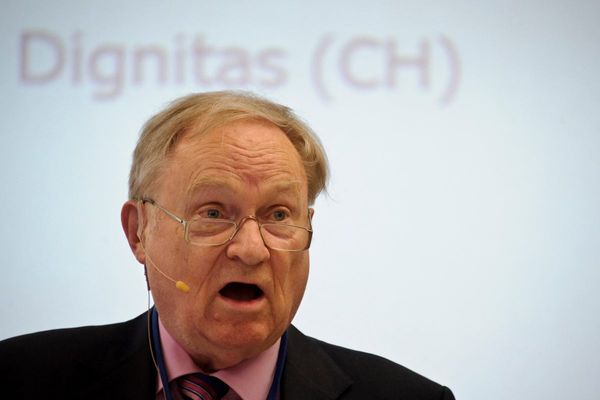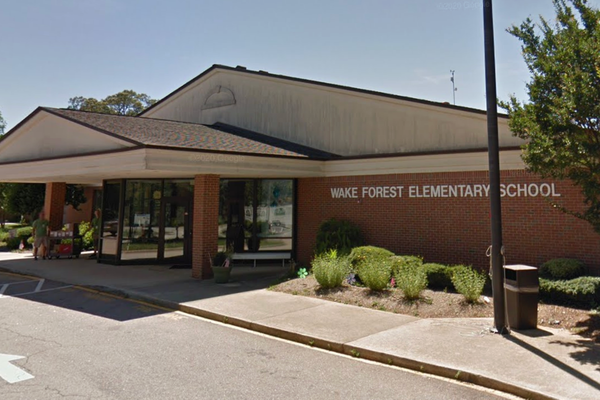
Bill Shorten — who finished up as NDIS minister this week before heading off to become the vice-chancellor of the University of Canberra — was a key architect of the National Disability Insurance Scheme (NDIS), the most important addition to Australia’s social safety net in decades.
The former Labor leader leaves government with his policy legacy under sustained assault, with the growth of the scheme facing an organised campaign against it in the business press and among influential voices on social media.
Foremost of the critics has been the Australian Financial Review, which has run a concerted campaign against NDIS spending for more than a year now.
Understanding the accusations
The campaign against the NDIS has been two-pronged.
First, critics have accused the scheme of being beset with fraud and over-servicing. These accusations are incredibly damaging, with media stories and Reddit threads detailing lurid tales of exploitation and rorting. Shorten has stoked some of these himself, announcing a series of crackdowns.
The true scale of NDIS fraud is, by definition, hard to quantify. The National Disability Insurance Agency (NDIA) doesn’t appear to keep a collated figure for fraud, but it does list a line item for “compensation receipts”. This was $48.1 million in 2024 — hardly a budget breaker.
Another way of measuring NDIS waste is the NDIA’s figure for “critical error rates”, which is broader than fraud and includes things the agency doesn’t want to pay for. Its annual report says “the estimated potential financial impact of the provider (plan- and agency-managed) critical error rates was assessed as being $1,688.2 million (4.7% of total provider payments).”
This is certainly concerning, but the figure is likely to come down in future years as the NDIA makes eligibility more stringent.
The second common accusation is that the NDIS’ growth is blowing out government spending and crowding out private-sector investment and employment.
For the NDIS’ critics, crackdowns are not enough. One of the key voices has been economic commentator Steven Hamilton, who penned an op-ed in the AFR in December claiming that “the public sector is quite genuinely strangling the private sector to death”. Hamilton argued that “the scale of the waste is so outrageous that it’s hard to see the NDIS surviving.”
Hamilton claims that, in a time of high inflation, an exploding public sector is sucking resources out of the private sector. “The very definition of the economy being beyond its capacity is that any new activity must be (more than) offset by reduced activity elsewhere,” he writes.
But there’s a glaring problem with the argument that disability spending is somehow choking the life out of the private sector: most of the NDIS is in the private sector. Hamilton seems not to have realised that the largely outsourced model of the NDIS means the majority of NDIS providers are non-government organisations or ordinary businesses.
Public vs private
The confusion appears to stem from the use of ABS Labour Account statistics to lump all the jobs in three broad industries — health care and social assistance, education and training, and public administration and safety — into a catch-all category called “non-market”.
Non-market jobs have grown far quicker in recent years than so-called “market” employment, leading to a slew of commentary about the supposed imbalance building between the “private” and “public” sectors.
But a large number of these “non-market” jobs are actually in the private sector, such as those in private schools, private hospitals and private security firms. Drill down into the decomposed labour accounts data and you will discover the ABS rightly defines non-profits delivering services to households as part of the private sector.
Claiming that NDIS providers are part of the public sector is a bit like arguing that big defence contractors are part of the public sector. Lockheed Martin, BAE and Thales vacuum up billions of taxpayer dollars, but do we really think they’re in the “non-market” sector?
The military example is useful because it is during high-intensity wars that we often see genuine crowding out of private consumption by the public sector.
A glance at Russia’s war economy shows what can happen: massive ramp-ups in conscription and armaments manufacturing is sucking able-bodied workers out of the private economy and into the military-industrial complex, driving nasty domestic inflation and suppressing domestic private consumption. Military spending is running at 8% of GDP, factories are at capacity and unemployment is negligible.
Nothing like this is happening in Australia. The public sector is indeed doing much better than the private sector. Consumer-facing businesses may well be doing it tough, as consumers try to rebuild their savings decimated by the nasty inflation surge of 2022-23. As Treasurer Jim Chalmers has argued, government spending is propping up the rest of the economy.
The data supports Chalmers’ claims. GDP growth is anaemic, at just 0.8% for the year ending September. Household spending is bumping along at 2.4% in trend terms. Inflation continues to moderate, falling to 2.8% for the year ending September — within the RBA’s 2-3% target band. Unemployment is steady at 4.1%.
These are not the figures of an overheating economy.
Skewed by a worldview
In the big picture, therefore, it’s hard to argue that the NDIS is “strangling” the economy. A truly overheating sector would be sucking in workers and ratcheting up wages. However, most employment in disability services is relatively low-wage and low-skilled. We’ve seen no sign of a wages breakout: wages in healthcare and social assistance grew just 3.6% in the year to September. There’s no evidence that scarce construction workers are shedding their hi-vis for jobs in the disabilities sector.
The fiscal panic over the growth of the NDIS is similarly beset by dishonesty. The NDIS is, of course, a big spending program: its latest annual financial sustainability report puts the figure at around $47 billion this fiscal year, growing at around 8% a year. But hand-wringing commentary about disability spending headed towards $100 billion a year is based on 10-year projections expressed in nominal dollars. Inflation between then and now means the true cost to the budget will be far below this figure.
The beat-up over the NDIS is skewed by a worldview that sees supporting the most vulnerable in our community as an unaffordable cost, while tactically ignoring the benefits to recipients and our society of that care.
We could equally ask whether Australia can “afford” to give wealthy superannuants a huge tax break on their retirement savings. The Commonwealth actually “spends” more (by forgoing taxation) on superannuation tax concessions than on the NDIS, the lion’s share of which goes to the wealthy. Meanwhile, the main residence exemption for capital gains tax clocked in at $47.5 billion in 2023-24, while rental deductions, including negative gearing, cost $27 billion.
Government is all about choices. As John Maynard Keynes pointed out during World War II in Britain, “anything we can actually do, we can afford”. The true constraint on government action is the real resources of the nation, not fiscal firepower.
Those attacking the NDIS for supposedly rampant levels of fraud or its impact on the private sector should be more honest about why they really oppose disability spending: because they don’t want to pay the higher taxes that a broad-based care scheme requires.
Have something to say about this article? Write to us at letters@crikey.com.au. Please include your full name to be considered for publication in Crikey’s Your Say. We reserve the right to edit for length and clarity.










